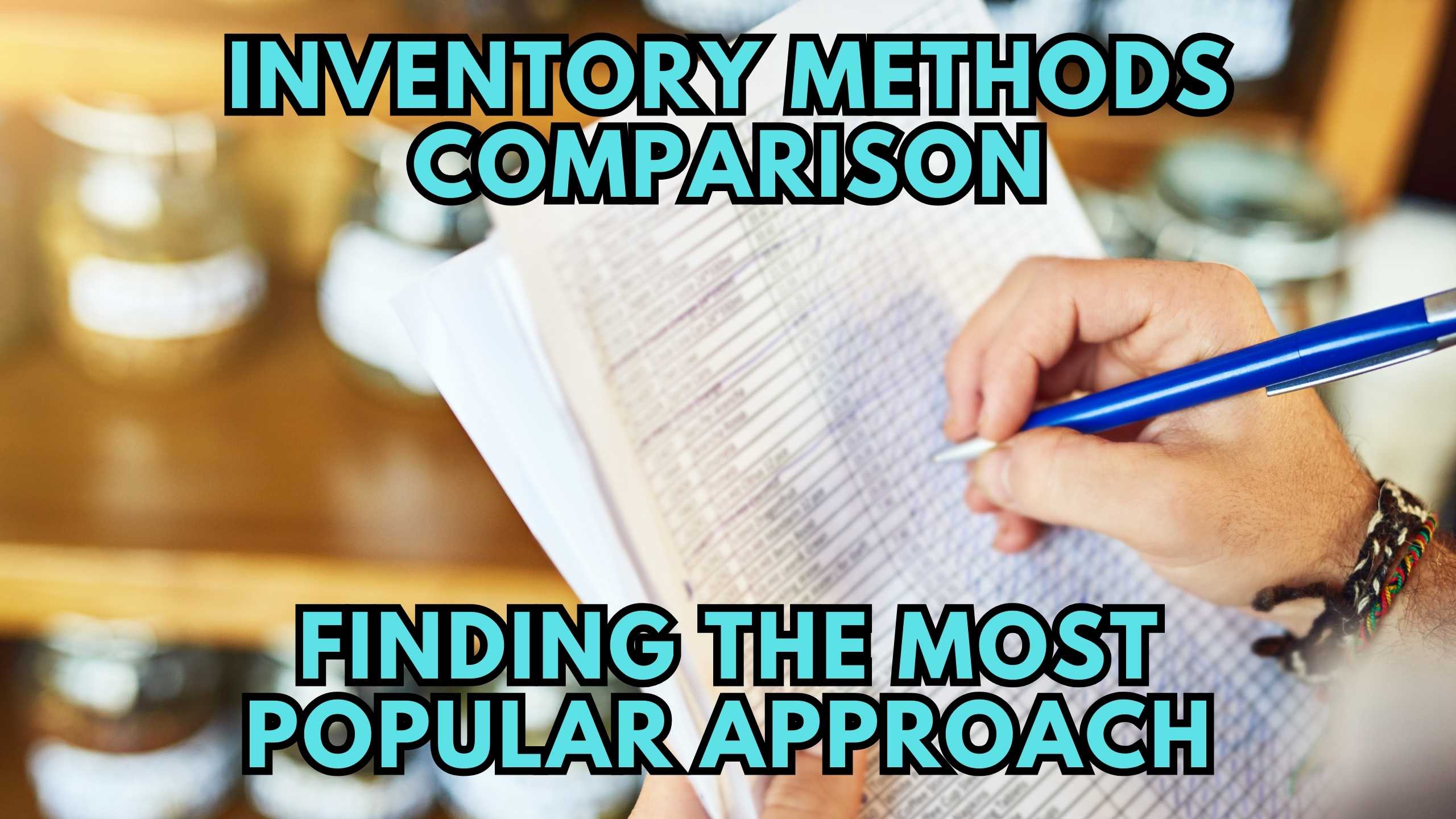Inventory Methods Comparison: Finding the Most Popular Approach
- Expense Management Software Credit Cards Investing Business Solutions


Inventory Methods Comparison: Finding the Most Popular Approach
For product-based businesses, keeping track of inventory is imperative for efficient operations and meeting customer demand. But with several inventory accounting methods out there, it can be tricky to identify the most popular approach. Understanding the pros and cons of each method allows businesses to determine the best fit based on their needs.
First In, First Out (FIFO)
FIFO is an inventory costing method where the products in stock the longest are recorded as sold first. With FIFO, the balance sheet reflects the most recent inventory costs since older inventory is expensed first. This leads to higher net income in periods of rising costs. FIFO conforms to how many businesses actually sell their older inventory first, making it intuitive. The simplicity also saves administrative costs related to tracking inventory batches.
Last In, First Out (LIFO)
Contrary to FIFO, LIFO expenses the newest inventory purchases first rather than older stocks. During inflation, LIFO better matches current revenue against current replacement costs for in-demand products. This leads to lower taxable income. However, LIFO can undervalue ending inventory on balance sheets in growing businesses. Complexity also increases administrative costs.
Weighted Average Cost
The weighted average method derives the cost of goods sold based on the average cost of units purchased over time. By smoothing out spikes in inventory costs, it provides more predictable gross margins than FIFO or LIFO. Companies can better forecast profits. But weighted average method takes more work recalculating averages with each new inventory batch. Record-keeping challenges grow with more SKUs.
Which Method is Most Popular?
According to accounting surveys, FIFO represents the most commonly used inventory valuation method with over 70% of firms leveraging it. The technique’s simplicity and reduced bookkeeping explains its widespread adoption. Manufacturers, retailers and wholesalers favor FIFO to move older product first and maintain fresher inventory. Tech companies also lean towards FIFO in fast-changing industries.
LIFO sees some use in the oil, mining and manufacturing sectors. But complexity limits adoption, making it the least-used approach overall. Weighted average falls in the middle – easier than LIFO but requiring more calculations than FIFO. It strikes a helpful balance for some businesses.
Best Practices for Implementation
Beyond choosing a technique, effectively setting up inventory processes ensures accuracy. Strategies like:
- Integrating with accounting systems
- Automating tracking
- Establishing policies
- Training staff
- Performing cycle counts
Proper inventory management implementation sustains visibility and control no matter the method.
Relevant Software:
- QuickBooks Online: QuickBooks Online stands as the leading small business accounting software, offering robust features for financial management, invoicing, expense tracking, and reporting. It provides businesses with a comprehensive solution for efficient and accurate financial tracking.
- Dropbox: Dropbox is a top file hosting platform known for its excellence in collaboration. It enables users to securely store, share, and collaborate on files, fostering seamless teamwork and ensuring easy access to documents from anywhere.
- Gusto: Gusto automates payroll, benefits, and HR processes for teams. This platform simplifies complex HR tasks, ensuring accuracy and compliance. From payroll processing to employee benefits management, Gusto streamlines administrative functions, allowing businesses to focus on their core operations.
- MailChimp: MailChimp stands out as the most popular email marketing app, offering a user-friendly platform for creating, sending, and analyzing email campaigns. With features like audience segmentation and automation, MailChimp empowers businesses to create effective and targeted email marketing campaigns.
- Calendly: Calendly provides an easy online appointment scheduling solution, streamlining the process of coordinating meetings and appointments. With its intuitive interface and integration capabilities, Calendly enhances scheduling efficiency and reduces the back-and-forth associated with setting up meetings.
Conclusion
FIFO’s simplicity and real-world fit makes it the leading inventory technique. But weighted average and LIFO work well for some situations. Assess costs, internal capabilities and financial reporting incentives when selecting a process. With the right method and execution, businesses keep inventory costs and spoilage low while improving efficiency.
Juggling Business Software Stressing You Out? Subscribed.fyi Can Help
As an entrepreneur or freelancer, you rely on software and web apps to run operations smoothly. But dealing with dozens of logins, payments and renewals across all those SaaS subscriptions rarely goes smoothly. It’s a major hassle keeping track.
Introducing Subscribed.fyi – the all-inclusive platform for easily managing your software stack no matter how many apps you use. Subscribed.fyi brings complete clarity to your subscriptions through centralized expense tracking and subscription management. Get expiration reminders, intuitive visualization of spending, and end-to-end control with just a few clicks in one convenient dashboard.
Relevant Links:





